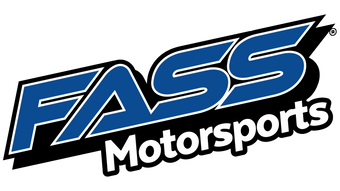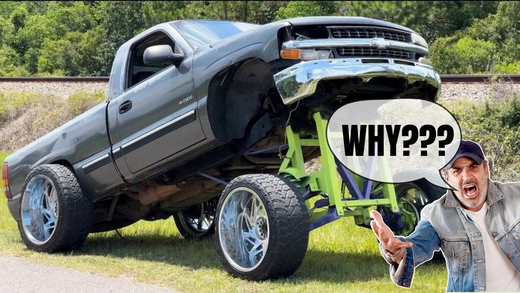In the world of truck customization, trends often come and go, but few have stirred as much debate and controversy as the phenomenon of "squatted trucks." This style, which involves lifting the front end of a truck while lowering the rear (or leaving it stock), has grown in popularity, especially in certain regions of the United States.
However, it has also sparked fierce debates regarding safety, performance, and aesthetics.
In this article, we'll dive into what squatted trucks are, why they have become so popular, and why they are considered problematic by many.
What is a Squatted Truck?
A squatted truck, sometimes referred to as the “California lean,” is a modification where the rear suspension is lowered or left stock while the front suspension is lifted. The result is a truck that appears to be “squatting” with a noticeably higher rear end and a lower front.
The most common trucks to undergo this notorious transformation are full-sized pickups, like the Chevrolet Silverado, Ford F-150, and Ram 1500, though any truck with a suitable suspension system can be modified this way.
The squat can vary in severity, but the key characteristic is the angle of the truck’s body, where the front end sits higher than the rear. The trend is particularly associated with Southern states like North Carolina, South Carolina, and Georgia, though it has spread to other parts of the country as well.
The Appeal of Squatted Trucks
The exact origins of squatted trucks are unclear, but their rise in popularity can be traced to a blend of factors related to style and culture. For many, the appeal lies in the unique appearance, for others, it’s more about being part of the “squatted community”.
The squat gives the truck an exaggerated, aggressive look, which some drivers find appealing for its audacity and individuality—to put it nicely.
In some circles, the squatted truck trend has become a form of rebellion against conventional truck aesthetics or a response to more traditional “lifted” trucks, which raise both the front and rear ends.
In certain areas, squatted trucks have become a symbol of a specific kind of country or “redneck” culture. These vehicles can serve as both personal expression and a subtle marker of regional identity, with some owners viewing the squat as a fun or even humorous take on traditional truck culture.
The Safety Concerns
Love them or hate them, squatted trucks turn heads on the road. However, they have raised significant safety concerns, and critics argue that the trend is not just an eyesore but a serious hazard. Here are some of the most commonly cited issues:
1. Impaired Visibility: When the front end of a truck is lowered, the driver’s line of sight is often obstructed. In particular, the lowered front end can make it difficult to see smaller vehicles, pedestrians, and objects in the road, increasing the likelihood of accidents, especially when turning or backing up.
2. Poor Handling and Stability: The altered suspension geometry can negatively affect the truck’s handling, making it less stable and more prone to swaying, especially at higher speeds. The truck's handling characteristics may also be affected by the fact that it was not designed for this kind of modification, leading to unpredictable behavior when cornering or braking.
3. Increased Risk of Headlight Misalignment: The squat often causes headlights to shine too high, blinding other drivers on the road. This can be particularly dangerous at night, as improperly aligned headlights can cause vision impairment for oncoming traffic, leading to crashes.
4. Wear and Tear on Suspension: The suspension system of a truck is designed to handle specific loads and angles. Lowering the front while lifting the rear puts strain on these components, leading to premature wear, alignment issues, and a greater chance of suspension failure.
5. Increased Accident Severity: A truck with a squatted appearance is more likely to cause serious damage in a rear-end collision. The higher rear end can result in greater force transfer to the vehicle behind, often causing more damage to smaller cars in the event of an accident.
The Legal and Regulatory Backlash
As squatted trucks have become more common, local governments have started to crack down on the trend, passing laws to curb the modification. Many states and cities have introduced regulations that prohibit vehicles from being modified in a way that alters their safety characteristics.
These regulations often focus on maintaining proper headlight alignment, ensuring clear visibility for drivers, and keeping the truck's suspension and alignment within certain limits.
In some states, squatted trucks are subject to fines, and owners may be required to reverse the modifications or face penalties. For example, in 2021, North Carolina passed a law making it illegal to drive a vehicle with a suspension that results in a “significantly uneven” ride height.
Other states, including Georgia, Alabama, and South Carolina, have also debated similar laws in response to the growing trend.
Is the Trend Dying?
The future of squatted trucks remains uncertain. While some enthusiasts continue to embrace the look, growing awareness of the safety risks, environmental impact, and legal restrictions may lead to a decline in their popularity.
Many truck owners are opting for more conventional modifications, like leveling kits or performance lifts, which offer aesthetic and functional improvements without compromising safety or handling.
There has also been significant backlash from the truck community at large. The squatted truck movement has received unrelenting criticism from other enthusiasts—with certain truck shows even banning squatted trucks altogether.
Right or wrong, squatted trucks are universally despised law enforcement officials and enthusiasts alike.
Conclusion: A Trend With Consequences
Squatted trucks may have gained a reputation for being bold and controversial, but they are not without their fair share of problems. While they represent a form of personal expression and truck culture, the safety, performance, and environmental concerns cannot be ignored.
As local laws continue to address these vehicles, it remains to be seen whether the trend will continue to grow or fade into obscurity.
Ultimately, the squatted truck represents a clash between style and substance, and while some truck enthusiasts may choose to embrace the look, others are turning their attention to modifications that offer more practical benefits without sacrificing safety or performance.
For now, the future of squatted trucks is as uncertain as the road ahead for this divisive trend.
FASS Motorsports: We don't squat trucks.
Around here, we prefer complete suspension kits that lift both the front and rear of a truck. So, if you're looking to squat your truck, we won't be much help.
But, if you're looking to lift (the front and rear) or level your truck, SUV, Jeep or UTV, give us a call! You're also welcome to come by our show room and installation facility at:
FASS Motorsports
25 Town and Country Drive
Washington, MO 63090

